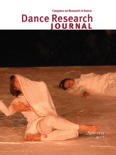
DANCE RESEARCH JOURNAL
Scope & Guideline
Unveiling the Cultural Tapestry of Movement.
Introduction
Aims and Scopes
- Cultural and Historical Analysis of Dance:
The journal publishes research that examines dance within specific cultural and historical frameworks, highlighting how dance practices reflect and shape societal norms and values. - Choreographic Studies and Performance Practices:
This area encompasses critical examinations of choreographic processes, performance aesthetics, and the role of dance in live and digital contexts. - Intersectionality in Dance:
A focus on how various social identities (such as race, gender, sexuality, and class) intersect in dance practices, influencing both the creation and reception of dance. - Dance and Politics:
The journal encourages studies that explore the political dimensions of dance, including activism, representation, and the role of dance in social movements. - Embodiment and Somatic Practices:
Research that investigates the physical and experiential aspects of dance, including somatic methodologies, body politics, and the lived experiences of dancers. - Global and Transnational Perspectives:
The journal emphasizes the importance of global contexts in dance research, addressing the dynamics of cultural exchange, migration, and the impact of globalization on dance forms.
Trending and Emerging
- Decolonization and Dance:
The journal has seen a surge in studies that address decolonial practices in dance, questioning traditional narratives and advocating for the recognition of marginalized voices and histories. - Queer and Feminist Perspectives:
Research focusing on queer and feminist theories in dance has become increasingly prominent, reflecting broader societal discussions about gender, sexuality, and representation in the performing arts. - Digital Dance and Technology:
With the rise of digital platforms, there is a growing interest in how technology influences dance creation, dissemination, and audience engagement, including studies on social media and virtual performances. - Dance and Activism:
Emerging themes also include the role of dance as a form of activism, exploring how dance can serve as a medium for social change and community building. - Interdisciplinary Approaches:
There is a notable trend toward interdisciplinary research that integrates dance studies with fields such as anthropology, sociology, and cultural studies, enriching the discourse around dance as a complex cultural phenomenon.
Declining or Waning
- Traditional Ballet Studies:
Research centered on classical ballet techniques and histories appears to be less frequent, as contemporary dance forms and practices gain more attention in academic discourse. - Historical Dance Forms:
There seems to be a reduced emphasis on the study of historical dance forms in isolation, with more scholars opting to contextualize these forms within broader cultural and political narratives. - Dance and Formalist Critique:
The focus on purely formalist critiques of dance, which prioritize aesthetics over socio-political contexts, has diminished as interdisciplinary approaches become more prevalent. - Eurocentric Perspectives:
There is a noticeable decline in research that solely centers on Western dance traditions, as scholars increasingly recognize and incorporate diverse cultural perspectives and practices.
Similar Journals
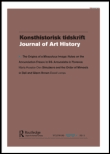
KONSTHISTORISK TIDSKRIFT
Advancing Critical Discourse in Visual ArtsKONSTHISTORISK TIDSKRIFT is a distinguished journal dedicated to the exploration of art history and its intersections with visual and performing arts. Published by Routledge Journals, Taylor & Francis Ltd, this esteemed publication has been a vital resource for scholars and professionals alike since its inception in 1932, with a mission to advance the understanding of historical and contemporary artistic expression. Operating from the United Kingdom, it currently occupies a commendable Q3 Quartile ranking in both History and Visual Arts and Performing Arts categories for 2023, according to Scopus metrics. With an engaging array of peer-reviewed articles, the journal serves as a platform for critical discourse, fostering an inclusive intellectual community. As it looks ahead to its convergence into 2024, KONSTHISTORISK TIDSKRIFT promises to enrich the academic landscape with impactful research and insights, making it a vital resource for researchers, professionals, and students passionate about the field.

Journal of Physical Education Recreation and Dance
Championing excellence in physical education research.The Journal of Physical Education Recreation and Dance, published by Routledge Journals, Taylor & Francis Ltd, stands as a pivotal platform in the fields of education, orthopedics, and sports medicine. With a robust ISSN of 0730-3084 and E-ISSN of 2168-3816, this journal serves to disseminate cutting-edge research and practical insights that cater to the dynamic needs of physical educators, therapists, and recreation professionals. Although classified in the third quartile (Q3) for key categories in 2023, its rankings in the Scopus database, including #972/1543 in Education, reflect a noteworthy 37th percentile position that underscores its relevance in contemporary academic discourse. While currently not open access, the journal provides essential access to valuable research contributions from 2018 to 2024, thereby fostering scholarly discourse and bridging gaps between theory and practice. Aimed at researchers, practitioners, and students alike, the journal plays a crucial role in advancing knowledge and enhancing the practice of physical education and health professions.

Boletin de Arte
Fostering Dialogue Through Artistic ScholarshipBoletin de Arte is a distinguished academic journal dedicated to the field of visual arts, published by the Universidad Nacional de La Plata, Facultad de Bellas Artes. With its inception in 2013, this Open Access journal aims to foster scholarly communication and collaboration among researchers, artists, and students by providing a platform for high-quality peer-reviewed articles that explore various dimensions of artistic expression and cultural dialogue. The journal's commitment to accessibility ensures that emerging insights and innovative artistic practices reach a broad audience, while its evolving repository of research contributes significantly to the advancement of knowledge in the arts. Situated in the vibrant academic environment of La Plata, Argentina, Boletin de Arte is an essential resource for those involved in the creative arts, offering insights that enhance both academic scholarship and practical application in the field.

Umeni-Art
Unveiling Artistic Insights for Future GenerationsUmeni-Art is a prominent journal in the field of visual arts and performing arts, published by the Institute of Art History, Academy of Sciences, Czech Republic. With its ISSN 0049-5123 and E-ISSN 1804-6509, the journal has established itself as a critical platform for scholarly discourse and artistic expression since its inception in 2002. Although currently classified in Q4 within the Arts and Humanities category, it aims to elevate the understanding and appreciation of the arts through rigorous research and innovative perspectives. The journal's Scopus ranking places it at Rank #573/667, reflecting its growing contribution to the field and expanding reach within the artistic community. With a focus on fostering collaboration among researchers, practitioners, and students, Umeni-Art seeks to enrich the academic landscape with significant findings and discussions that inspire future research and creative endeavors. While it does not offer open access, the journal remains a valuable resource for those vested in exploring the dynamic interplay between art, culture, and society in the contemporary context.

GOYA
Advancing Knowledge in Artistic ExpressionGOYA, published by the esteemed FUNDACION LAZARO GALDIANO, is a pivotal journal in the field of Visual Arts and Performing Arts. With an ISSN of 0017-2715, this Spanish journal serves as a critical platform for scholars, artists, and practitioners to engage with contemporary issues, trends, and methodologies in the arts. Since its inception, GOYA has strived to illuminate the intersection of artistic expression and cultural discourse, with coverage spanning from 2002 to 2024. The journal proudly holds a Q3 category ranking in the 2023 Scopus assessments for its field, reflecting its respected position among peers, with a notable rank of #377 out of 667. Though it does not follow an Open Access model, GOYA continues to contribute significantly to the academic landscape, enabling a deeper understanding of artistic practices and their societal implications. Researchers and students alike will find the journal an invaluable resource for insights and inspiration within the dynamic realm of the arts.
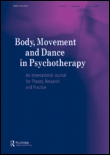
Body Movement and Dance in Psychotherapy
Unlocking Emotional Expression through DanceBody Movement and Dance in Psychotherapy is an esteemed journal published by Routledge Journals, Taylor & Francis Ltd, focused on the intersection of movement, dance, and psychotherapy. Since its inception in 2006, the journal has provided a platform for the dissemination of innovative research and practical applications related to body movement as a therapeutic tool. It is indexed with the ISSN 1743-2979 and E-ISSN 1743-2987, although it currently does not offer open access. With a reputable presence in the United Kingdom, the journal serves as a valuable resource for professionals and researchers in the fields of clinical psychology and psychiatry, holding a Q4 quartile ranking in both disciplines in 2023. The journal’s unique perspective encourages interdisciplinary collaboration, thereby enriching the therapeutic landscape and fostering a deeper understanding of the role of somatic practices in mental health treatment. Aspiring professionals, dedicated researchers, and students alike will find this journal to be an essential addition to their resources, enhancing both their knowledge and practice.

HISTORY OF PHOTOGRAPHY
Chronicling the Image: Understanding Photography's Cultural SignificanceHISTORY OF PHOTOGRAPHY is a prestigious scholarly journal published by Taylor & Francis Ltd, focusing on the rich and evolving narrative of photography as an art form and cultural phenomenon. With an ISSN of 0308-7298 and E-ISSN 2150-7295, this journal has established a significant presence since its inception in 1977, with an anticipated run into 2024. Positioned in the Q4 category of the Visual Arts and Performing Arts field, it ranks within the 51st percentile among its peers, affirming its role in the scholarly discourse of photography. Although not an Open Access journal, it maintains accessibility for academics through institutional subscriptions and various library networks. The journal aims to foster interdisciplinary dialogue, encompassing diverse perspectives on the history, theory, and practice of photography, making it an invaluable resource for researchers, professionals, and students alike who are seeking to deepen their understanding of this dynamic medium.
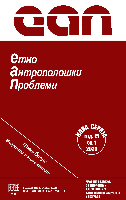
Etnoantropoloski Problemi-Issues in Ethnology and Anthropology
Exploring cultural dynamics through innovative research.Etnoantropoloski Problemi-Issues in Ethnology and Anthropology, published by the University of Belgrade, Faculty of Philosophy, is a prestigious open-access journal dedicated to advancing the fields of ethnology and anthropology. With its ISSN 0353-1589 and E-ISSN 2334-8801, the journal has been a crucial platform since 2006, facilitating the dissemination of innovative research and critical discussions among scholars worldwide. As an open-access journal, it ensures that valuable insights and findings are readily accessible, promoting knowledge sharing and collaboration across the academic community. The journal aims to explore and address contemporary issues in cultural studies, social dynamics, and human behavior, emphasizing the relevance of ethnological and anthropological research in understanding our increasingly interconnected world. Researchers, professionals, and students alike will find Etnoantropoloski Problemi an essential resource for staying informed about the latest developments and debates within these dynamic disciplines.

South African Journal of Art History
Fostering a Deeper Understanding of South Africa's Artistic HeritageSouth African Journal of Art History is a premier academic publication dedicated to the exploration and critical analysis of art history within the South African context. Published by the Art Historical Work Group South Africa (AHWG), this journal serves as a vital platform for researchers, professionals, and students alike to disseminate innovative research and engage with diverse perspectives on visual culture. With an ISSN of 0258-3542, the journal aims to elevate the study of art history, contributing significantly to the scholarly community's understanding of both local and international art narratives. Although currently not an open access journal, it is committed to high academic standards and in-depth scholarship, ensuring that each article published meets rigorous criteria. As South Africa continues to position itself at the forefront of global art discourse, the South African Journal of Art History stands out as a critical resource for anyone interested in the intersections of art, culture, and history within this dynamic region.
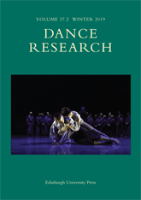
Dance Research
Exploring the Artistry and Impact of DanceDance Research is a prestigious academic journal published by Edinburgh University Press, dedicated to the comprehensive exploration of dance and its multifaceted interactions within the realms of visual arts and performing arts. Established in 1996, this journal has grown in prominence, achieving a Q1 ranking in the Visual Arts and Performing Arts category for 2023, signifying its influence and high-quality scholarship in the field. With an impressive Scopus ranking of #232 out of 667 in the Arts and Humanities cluster, it offers a vital platform for researchers, professionals, and students alike, facilitating critical discourse and innovative research on various aspects of dance. Although the journal currently operates under a traditional access model, its rich collection of articles often features diverse methodologies, in-depth case studies, and theoretical analyses that stimulate both academic inquiry and practical applications in dance. Dance Research is an essential resource for those looking to deepen their understanding of dance as an evolving art form, and is instrumental for advancing scholarly conversations in this vibrant field.